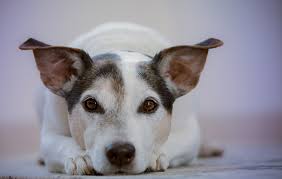Not many owners know about thyroid problems – but they are increasingly common in middle-aged pets, with one in 10 older cats and one in 120 dogs having a thyroid problem.
Cats tend to suffer from an overactive thyroid gland, when it produces too much thyroid hormone, and this can cause a range of clinical signs. These are most commonly weight loss, changes in behaviour – nervous, overactive or often manic behaviour – and increased appetite and thirst. Sometimes it can lead to weakness, breathing difficulties and a rapid heart rate. Diagnosis is by a blood test, which indicates too much thyroid hormone in the blood.
Catching the condition early is vital, as it can go on to contribute to significant problems with the cat’s heart, potentially leading to serious complications that can affect the eyes, blood pressure level, kidneys and brain.
Dogs, however, are the opposite. They tend to have a decrease in thyroid hormone, which usually makes them lethargic and sluggish. They are less keen to exercise or reluctant to go as far on their walks. They usually gain weight and can seem cold, or seek warmth. Their coat condition will often change, with dry, dull fur and patches of hair loss. As many of these signs are perceived to be due to old age, it can often be a condition which goes undetected.
Although any dog can develop a thyroid problem, although large dogs seem to be particularly at risk. It’s important to treat the condition, as it can go on to cause a serious and progressive decline in health.
Spot the signs…
Hypothyroidism in dogs (underactive thyroid)
- Weight gain;
- lethargy (always feeling tired);
- reduced activity;
- dull hair/coat;
- loss or thinning of coat;
- recurrent skin or ear problems;
- seeking out warm places.
Hyperthyroidism in cats (overactive thyroid)
- Weight loss;
- increased appetite;
- increased thirst;
- increased urination;
- defecating outside the litter tray;
- mood change (irritability or nervousness);
- restlessness, increased activity;
- poor, unkempt fur.
If your pet displays any of these symptoms, contact your vet. Both conditions are easily detected and treated, with treatment being both effective and affordable.
Sarah Probert BVSc MRCVS
Bridgnorth Veterinary Centre






